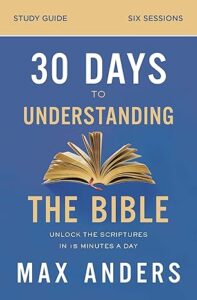During a recent trip to the Buckle of the Bible Belt (aka Nashville), I realized I knew very little about the Good Book. Thankfully, the city is home to Thomas Nelson, one of the world’s largest Bible publishers. It turns out that the same company also puts out guides on how to read the Bible for beginners, and I nabbed one.
Here’s what I learned in absolute bare-bones form. All dates are estimates or made up. In terms of interpretation, you’re on your own.
The Basics
The Bible is a collection of books written by numerous authors over thousands of years.
The Protestant Bible consists of 66 books, divided into the Old Testament and the New Testament.
The Old Testament (39 books) tells the story of the Hebrew people, taking us up to approximately the time of Jesus.
The New Testament (27 books) tells the story of Jesus, the formation of the Church, and the spread of Christianity.
The Old Testament
The Books
- Genesis
- Exodus
- Leviticus
- Numbers
- Deuteronomy
- Joshua
- Judges
- Ruth
- 1 Samuel
- 2 Samuel
- 1 Kings
- 2 Kings
- 1 Chronicles
- 2 Chronicles
- Ezra
- Nehemiah
- Esther
- Job
- Psalms
- Proverbs
- Ecclesiastes
- Song of Solomon
- Isaiah
- Jeremiah
- Lamentations
- Ezekiel
- Daniel
- Hosea
- Joel
- Amos
- Obadiah
- Jonah
- Micah
- Nahum
- Habakkuk
- Zephaniah
- Haggai
- Zechariah
- Malachi
The General Idea
Of the 39 books, the first 17 are considered historical, the next five poetical (centered on wisdom and reflections), and the last 17 prophetical (focused on God’s message as delivered through various prophets).
In other words, if you’re looking for a historical framework, it’ll be found in the first 17 books. In fact, of these, only 11 are considered primary. That means by reading those 11 books—Genesis, Exodus, Numbers, Joshua, Judges, 1 Samuel, 2 Samuel, 1 Kings, 2 Kings, Ezra, and Nehemiah—you’ll get a timeline into which all the other books fit.
This timeline can be divided into nine different eras:
- Creation. Around 4000 BCE, God creates the world, humankind (starting with Adam and Eve), and so on.
- Patriarch. Around 2000 BCE, Abraham is called on by God to father a new nation. Abraham’s descendants end up in Egypt, where they are enslaved.
- Exodus. Through Moses, the Hebrew people are freed from slavery and make their way back to the Promised Land (modern-day Israel).
- Conquest. Joshua leads the conquest of the Promised Land.
- Judges. A group of leaders known as the judges leads the Hebrew people through 400 turbulent years.
- Kingdom. Around 1000 BCE, King David—considered among the best—rules over a United Kingdom, which after his death splits into the Kingdom of Israel in the north and the Kingdom of Judah in the south.
- Exile. Both kingdoms are conquered by outside powers, leading to years of captivity.
- Return. Around 539 BCE, the Hebrew people are allowed to return to Jerusalem, where they rebuild a temple and the city walls.
- Silence. Various religious and political groups arise during a 400-year period between the close of the Old Testament and the opening of the New Testament (see below).
The New Testament
The Books
- Matthew
- Mark
- Luke
- John
- Acts
- Romans
- 1 Corinthians
- 2 Corinthians
- Galatians
- Ephesians
- Philippians
- Colossians
- 1 Thessalonians
- 2 Thessalonians
- 1 Timothy
- 2 Timothy
- Titus
- Philemon
- Hebrews
- James
- 1 Peter
- 2 Peter
- 1 John
- 2 John
- 3 John
- Jude
- Revelation
The General Idea
Of the 27 books, the first five are considered historical, and the last 22 are a compilation of letters, or epistles.
Similar to the above, if you’re looking for a historical framework, it’ll be found in the first five books.
That timeline can be divided into three different eras:
- Gospel. Beginning around when BCE becomes CE, the life, death, and resurrection of Jesus take place.
- Church. The Christian church is formed.
- Missions. The reach of the Church expands via missions, taking us up to about 100 CE.
As mentioned, this how to read the Bible for beginners guide isn’t meant as life advice. When it comes to the Bible, you’re free to embrace it, ignore it, or find middle ground in between.
Just don’t expect anyone else to agree.

2 Responses
the devil is in the detail {lot of times} and interpretation
Very true!